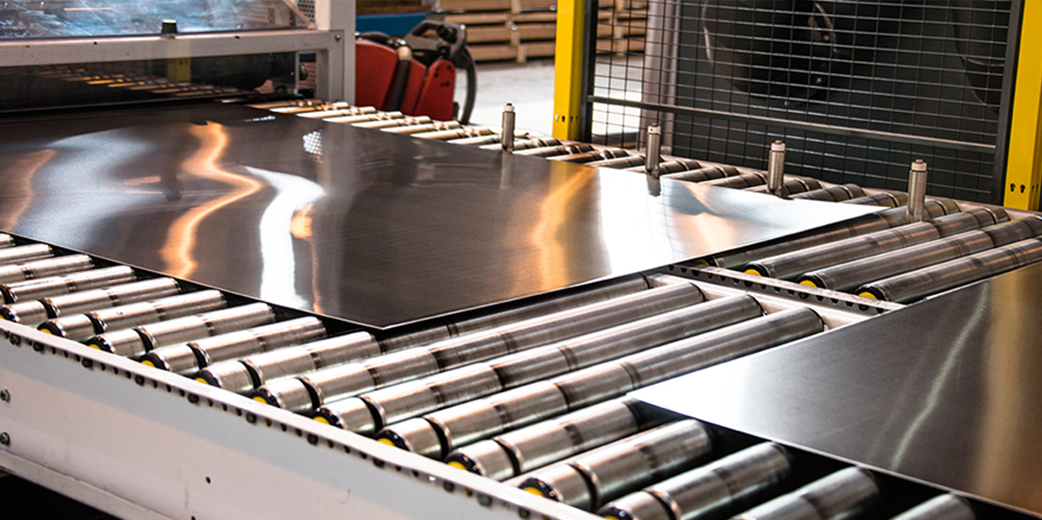Erqi District, Zhengzhou City, Henan Province
Monday-Sunday:7:00AM - 23:00PM
A number you can call:+86 13164350935
Hot rolling and cold rolling are the forming process of section steel or plate, they have a great impact on the structure and properties of steel, steel rolling is mainly hot rolling, cold rolling is only used to produce small section steel and sheet.
Generally speaking, a billet is heated (like the red, hot steel that you see on TV) and then rolled through several passes, and then trimmed and corrected into a steel plate. This is called hot rolling. Cold rolling is processed and rolled out of the base of hot rolled plate. Generally speaking, it is a process of hot rolling - pickling - cold rolling. Cold rolling is processed by hot rolled plate at room temperature, although in the processing process due to rolling will also make the steel plate temperature, but it is still called cold rolling. As a result of hot rolling through continuous cold rolling, the mechanical properties are relatively poor, and the hardness is too high. Must be annealed to restore its mechanical properties, no annealing is called rolled hard roll. Hard roll is usually used to make products without bending and stretching. The thickness of hard roll below 1.0 is lucky to be bent on both sides or four sides.
Hot rolling advantages: it can destroy the casting structure of the ingot, refine the grain of the steel, and eliminate the defects of the microstructure, so that the structure of the steel is compact, and the mechanical properties are improved. This improvement is mainly reflected in the rolling direction, so that the steel is no longer isotropic to some extent; The bubbles, cracks and loosening formed during pouring can also be welded under the action of high temperature and pressure.
Disadvantages :
1. After hot rolling, non-metallic inclusions (mainly sulfides and oxides, and silicate) in the steel are compressed into thin sheets, resulting in lamination (sandwich) phenomenon. Delamination greatly worsens the tensile properties of the steel along the thickness and may cause interlaminar tearing as the weld shrinks. The local strain induced by weld shrinkage is often several times of the yield point strain, which is much larger than the strain induced by load.
2. Residual stress caused by uneven cooling. Residual stress is the internal self-equilibrium stress under the action of no external force. All kinds of hot-rolled steel sections have this kind of residual stress. Generally, the larger the section size of the steel section, the greater the residual stress. Although the residual stress is self-phase equilibrium, it still has some influence on the performance of steel members under external force. Such as deformation, stability, fatigue resistance and other aspects may have adverse effects.
Cold rolling refers to the processing of steel plates or steel strips into various types of steel by cold drawing, cold bending and cold drawing at normal temperature. Advantages: forming speed, high yield, and does not damage the coating, can be made into a variety of cross section forms, to meet the needs of the use conditions; Cold rolling can cause large plastic deformation of steel, which increases the yield point of steel. Disadvantages: 1. Although there is no hot plastic compression in the forming process, there is still residual stress in the section, which will inevitably affect the overall and local buckling characteristics of steel; 2. 2. Cold-rolled steel sections are generally open sections, so that the free torsional stiffness of the section is low. It is easy to twist when bending, and it is easy to bend and twist buckling when under pressure, and its torsional resistance is poor. 3. The wall thickness of cold-rolled steel is small, and there is no thickening at the corner of the plate connection, and the ability to bear the localized concentrated load is weak. Three. The main differences between hot rolling and cold rolling are:
1. The section of cold-rolled steel is allowed to be partially buckling, so that the bearing capacity of the bar after buckling can be fully utilized; However, local buckling is not allowed in the section of the hot rolled section.
2. The residual stress of hot rolled steel and cold rolled steel is caused by different reasons, so the distribution on the section is also very different. The distribution of residual stress on the section of cold-formed thin-walled steel is bending type, while that on hot-bonded or welded steel is thin film type.
3. The free torsional stiffness of hot rolled steel is higher than that of cold rolled steel, so the torsional resistance of hot rolled steel is better than that of cold rolled steel.
Hot rolled stainless steel plate is rolled into a relatively thin steel plate at a higher temperature; Cold rolling is the rolling of steel plates at room temperature. Generally, hot rolling is carried out first, followed by cold rolling. Thicker steel plate can only be hot rolled, rolled into a thinner plate, and then cold rolled. Hot rolled steel plate is divided into thick plate (thickness is greater than 4mm) and thin plate (thickness is 0.35~4mm) two kinds; Cold rolled steel plate only thin plate (thickness of 0.2~4mm) a. The end temperature of hot rolling is generally 800~900, and then it is generally cooled in the air, so the hot rolling state is equivalent to normalizing. The metal material delivered in hot rolling condition has a certain corrosion resistance because the surface is covered with an oxide film.




